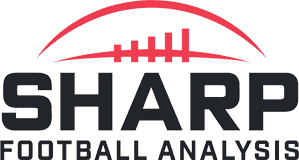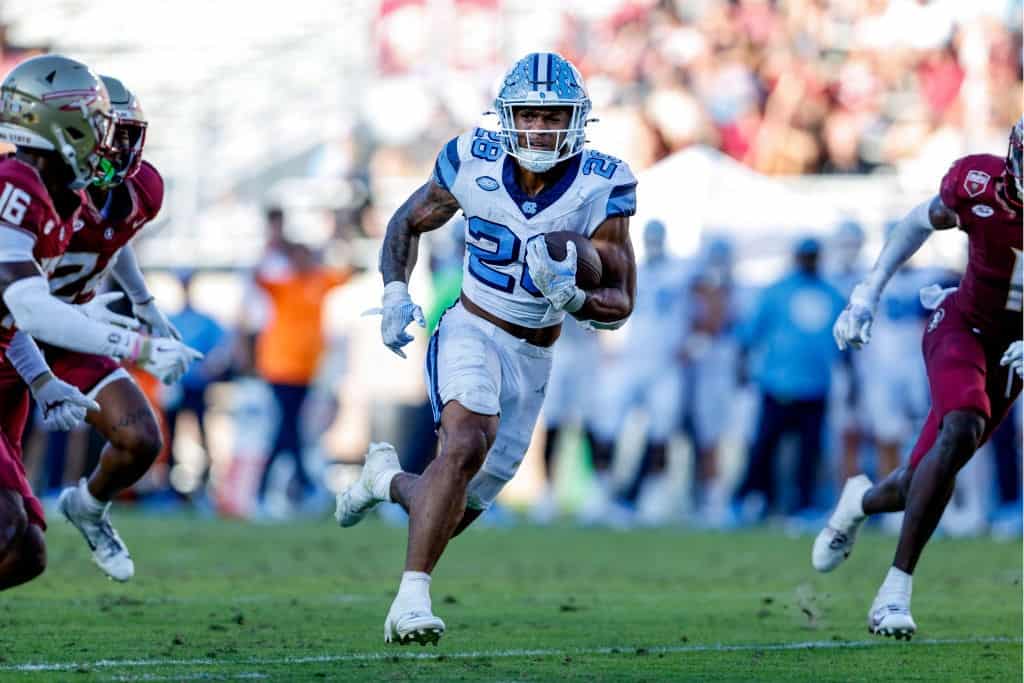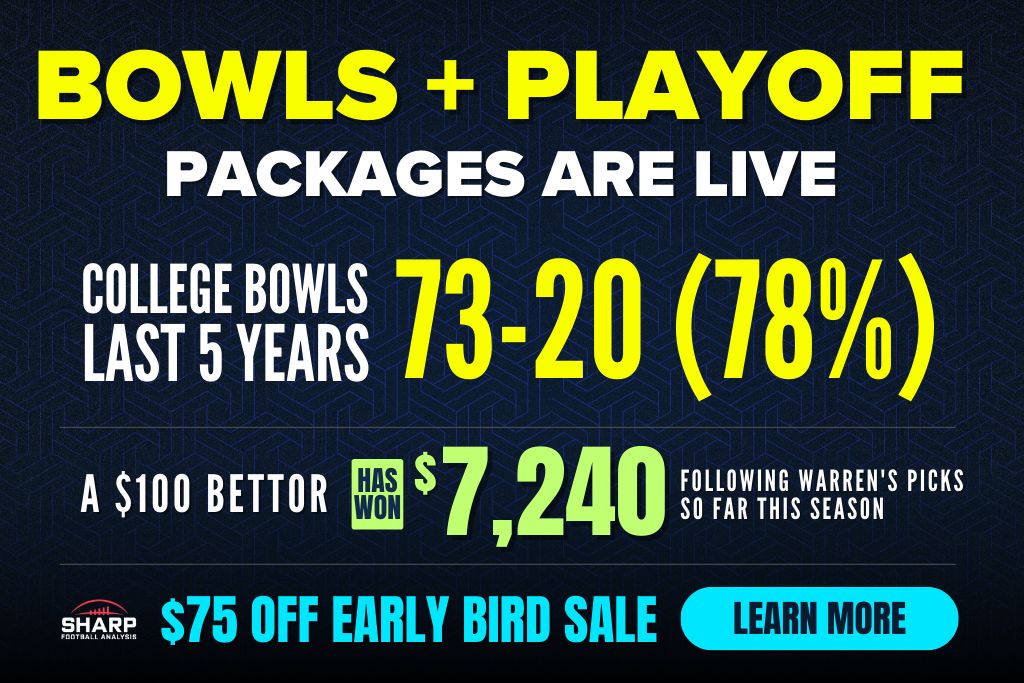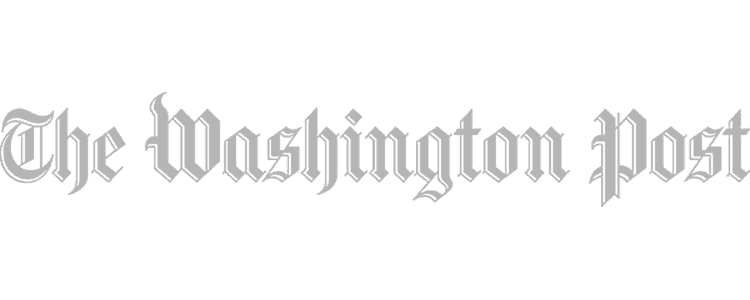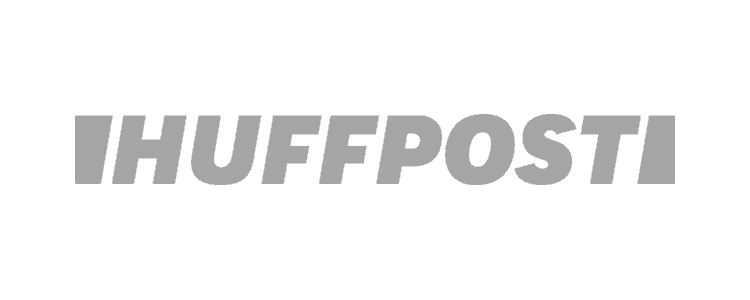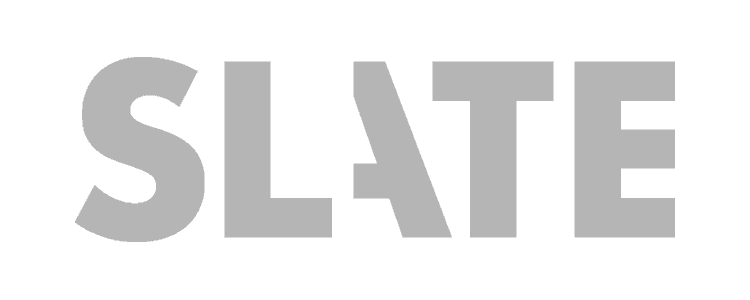The following is an excerpt from Warren Sharp's 2025 Football Preview book. In addition to Warren's deep, detailed write-up on all 32 NFL teams, each chapter features page after page of full-color charts, stats, and heatmaps as well as draft class analysis from Ryan McCrystal. Click here for a full FREE chapter from the 2025 Football Preview.
With 2025 NFL training camps on the horizon, we’re starting to understand how 2025 NFL draft classes will impact each roster this season.
Let's look at the Los Angeles Chargers, breaking down the most likely instant-impact rookies from each class, while also providing some insight into why certain early picks may not see the field.
Who are the Los Angeles Chargers rookies?
- Omarion Hampton (RB, North Carolina)
- Tre Harris (WR, North Carolina)
- Jamaree Caldwell (DL, Oregon)
- Kyle Kennard (EDGE, South Carolina)
- KeAndre Lambert-Smith (WR, Auburn)
- Oronde Gadsden II (TE, Syracuse)
- Brandson Taylor (OT, Pitt)
- R.J. Mickens (S, Clemson)
- Trikweze Bridges (S, Florida)
Los Angeles Chargers Draft Class Grade:
The Los Angeles Chargers received a B draft grade from Sharp Football.
Which Chargers Rookies Will Make An Impact?
Jim Harbaugh wants to run the ball, so after addressing the offensive line in last year’s draft, it made sense to spend this year’s first-round pick on Omarion Hampton.
At 221 pounds, Hampton has the size for the power run game, but the leap from North Carolina to Harbaugh’s scheme will be an adjustment.
Hampton ran into a box with seven or more defenders 53% of the time last season, but Chargers running backs saw an 80% rate in 2024.
One of the concerns with Hampton’s game is his vision and lack of a consistent ability to create for himself. That showed against boxes with seven or more men, when Hampton was stuffed for zero or negative yards 21% of the time, ranked 93rd in the FBS.
On a positive note, Hampton should provide a spark in the passing game. He’s a weapon in space and is worthy of playing a meaningful role.
Based on route adjusted data, Hampton gained 35% more yards after catch than expected over the last two seasons.
Tre Harris (second round) could also help Justin Herbert and will compete with Quentin Johnston for a starting job on the outside.
While addressing the wide receiver position made sense, Harris was an odd choice for a team that wants an upgrade over the unreliable Johnston.
On targets 10 or more yards downfield last year, Johnston had a pitiful 18% drop rate.
This was a known issue for Johnston, who had a route adjusted catch rate 3% below expected over his final two seasons at TCU. And now the team is trying to replace him with Harris, who had a catch rate 1% below expected over his final two seasons at Ole Miss.
Like Johnston, Harris has decent size and an ability to produce after the catch 一 but first you have to actually catch the ball.
Harris will be joined on the depth chart by KeAndre Lambert-Smith (fifth round), who can catch the ball (catch rate 12% above expected last year).
Lambert-Smith suffered through poor quarterback play for much of his career at Penn State and Auburn and might be a candidate to break out in the NFL.
Last year with the Tigers, Lambert-Smith hauled in 88% of his catchable targets on throws 15 or more yards downfield, the third-best rate in the SEC.
Jamaree Caldwell (third round) may not play a significant role in 2025, but will be in line for a starting job on the interior defensive line in 2026 as Teair Tart, Otito Ogbonnia, and Da’Shawn Hand are all in the final year of their contracts.
The 330-pound Caldwell played a versatile role at Oregon but is built for the nose tackle job and might be Tart’s replacement next season.
Kyle Kennard (fourth round) was a productive edge-rusher at South Carolina, generating a strong 12% pressure rate in 2024.
Khalil Mack and Tuli Tuipulotu are locked into starting roles, so Kennard will compete with Bud Dupree for snaps as a reserve this season. Mack is in his final contract year, however, so a starting job for Kennard in 2026 is possible if his rookie campaign goes well.
Oronde Gadsden II (fifth round) fills a need at tight end but was a surprising choice for Harbaugh given his love of skill position players who can block.
Gadsden, who previously played wide receiver like his dad, is not much of a blocker and doesn’t have the body type to make it easy to assume development in that area.
As a result, a full time role might be difficult for Gadsden to grow into in Los Angeles, but the team is also desperate for improved athleticism at the position.
During his career at Syracuse, Gadsden’s catch rate was 9% above expected based on route adjusted data, and 13% above expected during his final season.
With those reliable hands and the speed to stretch the field down the seam, there is certainly room for Gadsden to have a role on passing downs during his rookie year.
Branson Taylor (sixth round) played left tackle at Pittsburgh, but the Chargers are giving him an opportunity to compete for the starting job at left guard.
There might be as many as four linemen in that competition; however, winning the gig is unlikely, and maintaining a roster spot is not a guarantee given the impressive depth for this unit.
R.J. Mickens (sixth round) can play in the box or the deep secondary but has limited experience in the slot and might lack the athleticism for that role. He’ll play on special teams in the short term, while competing for a role as Derwin James’ backup.
Trikweze Bridge (seventh round) played every role in the secondary during his career at Oregon and Florida, while also getting extensive experience on special teams.
Although his production at cornerback was inconsistent, that rare level of versatility virtually guarantees him a roster spot. And there is some hope he could be a late bloomer.
In 2024 at Florida, Bridges allowed a catch rate 32% below expected, with a ball-hawk rate 75% above expected based on route adjusted data. If he weren’t turning 25 in September, that production likely would have led to him coming off the board much earlier.
The Chargers primarily focused on adding to the offense, which makes sense given the need to continue developing Herbert and trying to keep pace with the Chiefs. There were some questionable choices among that group, but at least the front office is focused on addressing the right areas, and now it will be up to the coaching staff to make it work.
This analysis continues in the 2025 Football Preview
Order Warren Sharp's 2025 Football Preview to get draft class analysis for all 32 NFL teams.
Warren Sharp’s 550+ page full-color PDF, the 2025 Football Preview, is unlike anything you have previously read. Stunning visualizations, including new heat maps, are built with the reader in mind. Innovative, next-level thought process abounds in every team chapter and article.
Get Warren's Book for $34.99
Warren Sharp's book shares insights into the players, coaches, teams, and philosophies with one goal: to prepare you for the 2025 NFL season with the smartest information delivered in the fastest, most direct way possible for optimal reviewing and retention.
- Team Chapters previews are in-depth, data driven & full of actionable info
- Fantasy Football player profiles, predictions, and ranks
- Vegas Odds forecast team wins, division rankings, lines for all 2025 games
- Coaching strategic advice for teams, play calling analysis & team tendencies
- Front Office Analysis positional spending, roster construction & cap analysis
- Reasons to bet over/under win totals & analysis of futures betting market
- Rookie draft class deep dive into impact for every team
- Rankings for every positional unit on every team with analysis
